This post is my Happy Easter greeting to family and friends

So it’s been two weeks now that I’ve been confined to walks that I can do directly from my living room. As the days have gone by I’ve found that this valley supplies enough new vistas and previously unexplored areas to keep me busy. It’s a wonderful feeling to explore a new footpath, see the town from a new angle, or notice a sign or building that I’ve passed many times but not noticed before. In the past people stayed more within the vicinity of their home, and it’s often seemed strange that people sometimes lived their whole life, never stepping out of a 10 mile radius of their homes. But during this last 2 weeks as I’ve explored I’m coming to understand that idea much more. And if I find myself on a path, looking at a view, passing a house where one of my ancestors lived, however distant a relation they might have been, I arrived home excited and eager to find out more about what I’ve just seen.
Take yesterday. I’d spent a couple of days downloading and transcribing newspaper articles, around 20 of them, mentioning one of my distant ancestors Stansfield Gibson – “quite the lad.” I’d been working on that in the morning and by lunchtime the fine weather on this Good Friday beckoned. I thought of the times when, as a young teen, living at Windermere Street my family had got up early, walked to the Tramways pub and boarded a bus to some distant place. I think these were excursions from my dad’s fishing club but I remember going as far as Symonds Yat in the Wye valley. I recalled these trips on always on Good Fridays and Easter Mondays.

At the beginning of the lockdown I discovered a trail, new to me, that runs from behind Hebden Bridge railway station, following close to the railway track towards Mytholmroyd and leading to the bridge on Carr Lane. It felt magical. I felt as if I was the first person to discover this trail. At first I thought the track only led to a large imposing victorian house that is right up against the railway lines and which acts as my cue to alert me to get ready to get off the train when I’m coming in from the Halifax direction. But then, one afternoon, quite by chance I noticed a small yellow arrow on a post indicating ‘footpath.’ So off I trundled. The house, Crow Nest house is an imposing edifice. There’s something spooky about it.
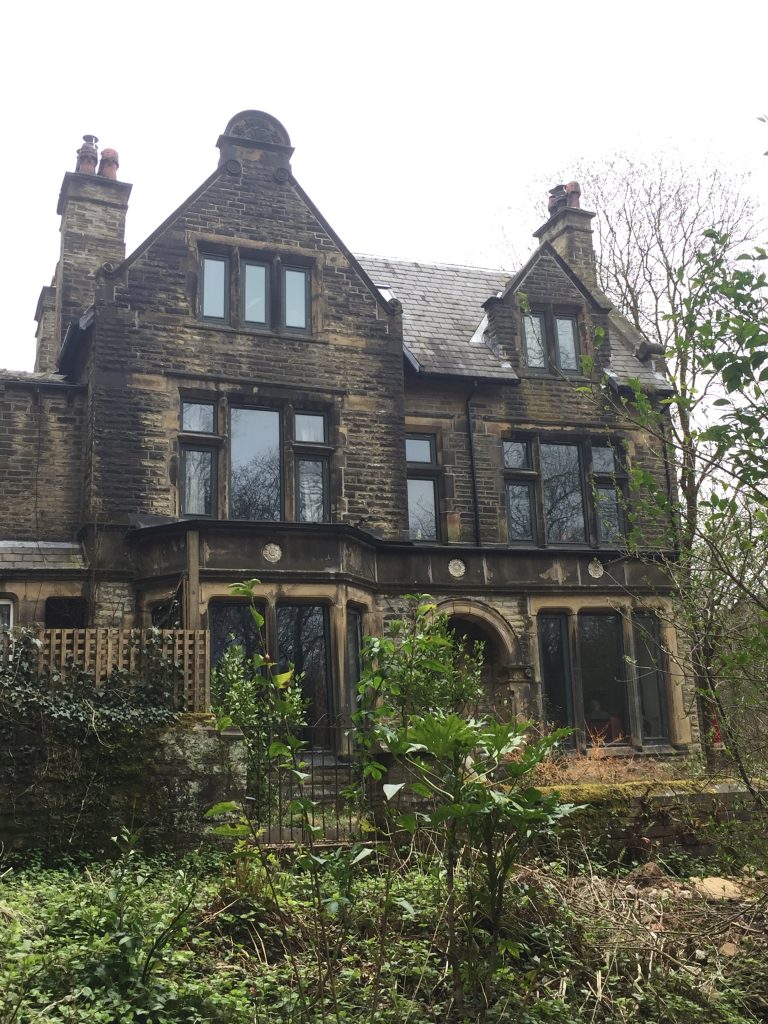
It reminds me of Fall of the House of Usher or the house in Debussy’s Pelleas and Melisande or Henry James’s Turn of the Screw. Most days since this first discovery I’ve taken this walk. I’ve seen 20 nappies on the line many of the days, I’ve witnessed someone giving instructions of camera usage over the garden fence at the requisite 2 metre distance. I’ve noticed the ‘Beware, cocker spaniel at large’ sign on the garden gate, and a man chopping logs.
(Update, Oct 7. Reading ‘A Century of Change’ tells me that the house once belonged to the manager of the Hebden Bridge gass works). The path passes through the bottom of Crow Nest Wood. To my right a steep bank is covered in trees whose varied barks fascinated me and lead to me take photos just of tree bark.
http://blog.hmcreativelady.com/wp-admin/post.php?post=10981&action=edit
I peered into a hole in a tree stump and was delighted to see a dim world filled with toadstools – for the little people, no doubt.

Occasional traces of man’s intrusion on this natural landscape bring half hidden pipe lines and broken fences. Two steep brick walls career down this hillside, one of them covered in now faded graffiti. To my left there’s a big boggy area running the entire length of the path. I think this suggests that the railway track is laid on a man made embankment. Occasional trains pass by within 30 ft of me: one passenger, maybe two on board what would normally be standing room only services between Leeds, Manchester and Preston.

At my side of the boggy land is the remnants of a wooden fence, created, I think from old railway sleepers. I wonder, idly, if it would be silly to give some of my favourite trees names. I seem to be getting to know them intimately. One afternoon sees me taking photos of trees that resemble other things – a goose in flight, or maybe it’s a pterodactyl, Siamese twins, and intimate human body parts! I post a photo of a tree knocking down a wall onto Facebook and I immediately get a response from someone saying that it looks like a man with his hand in the air – so obviously I’m not alone in seeing ‘other things’ in these tree parts.


Flying pterodactyl?
After a couple of days just walking along the track and back the same way I venture onto Carr Lane and find Carr Lane farm, obviously a working farm, and to my right a large grand newish house with beautifully laid out garden and conservatory.
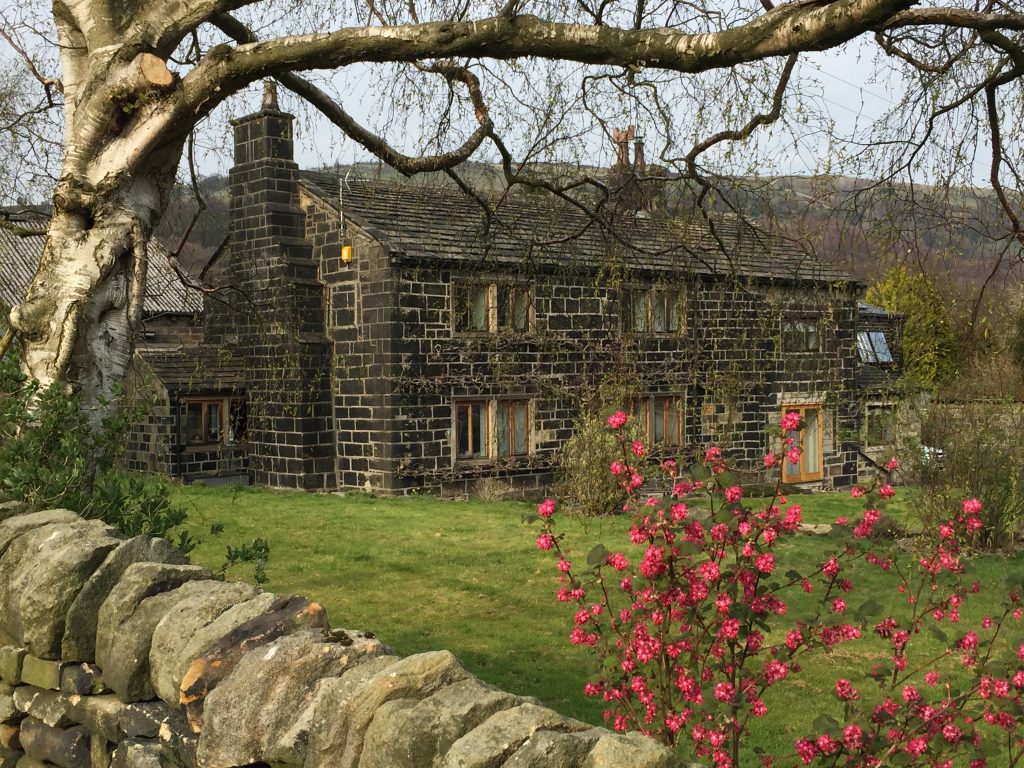
I have a shufti at what lies beyond and find that I’m in open countryside, above the treeline but with another layer of hills above me. I watch a shepherd on the opposite hill gathering his flock with the help of his sheepdog. I can see the brick houses of Mytholmroyd to my left. In the early days in this area all settlements and buildings were situated on the hilltops, where everyone lived, raising sheep and spinning and weaving, taking their woven cloth to the Cloth halls, such as the one in Heptonstall, and the Piece hall in Halifax, via packhorse routes. The only time anyone came into the valley was to cross the rivers, because the Calder Valley was one big marsh, unsavoury and unhealthy. When the industrial revolution was born the mills had to be built in the valleys because all the mills were powered by water. This led to the building of houses for the mill workers being built in the valleys. In the post-war years brick built housing estates were created creating, in many cases a link between the hilltop communities and the valley floor terraces. These brick houses in Mytholmroyd are perfect examples.

. . .and the tree won. Someone said they can see a man with outstretched arm
The next day I followed the path above Carr Lane farm, a lovely bridleway with extensive views to my left and woodland to my right. A stone wall ran along the edge of the path and had been ‘attacked’ by several of the trees lining the path. The trees always won. In front of me was the tiny hamlet of Wood Top. Now I’d visited Wood Top a couple of times before. The first time I’d got the name mixed up with Wood End. I’d an ancestor who had lived at Wood End but I’d gone to Wood Top by mistake. But, once there one of the current residents had shown me round, pointing out the raised area that had once been the mill pond. Wood Top was an old hand-loom weaving hamlet; by the late nineteenth century, it produced fustian – hard-wearing cotton material. Its inhabitants included the Saltonstall family; John was a fustian dyer, and one of his daughters, Lavena, a fustian clothing machinist, later became the best known of the local suffragettes. The house, built in the mid C17 with an added early C19 cottage and barn now converted to form a dwelling is a Grade 11 listed building.

Today I watched a herd of goats enjoying their breakfast, served in a big basket. The baby kids were clambering up the slope and jumping over the wall, and I realized that their breakfast was being served on top of the former mill pond. From Woodtop there are two choices, one being down the road suitable for cars, and I took that one day, finding myself at the top of the brick walls mentioned earlier, or the footpath that leads behind Fairfield, so I took that another day, leading me past the former Catholic church, now apartments, that my ‘naughty, naughty’ ancestor Willie Wrigley designed. (See Willie Wrigley post). http://blog.hmcreativelady.com/wp-admin/post.php?post=7462&action=edit
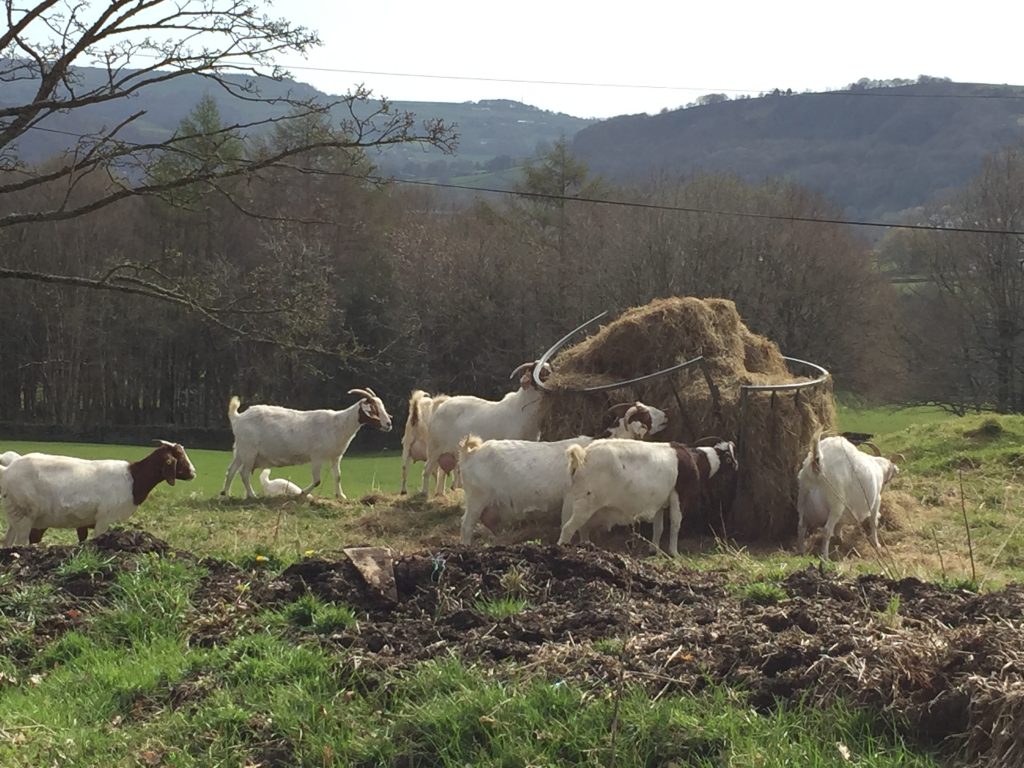
Yesterday, getting to Wood Top was my only intention, but the weather was lovely and I couldn’t resist extending my walk, this time up the second set of hills to Old Chamber. I’d only ever been to this area once before and that was on a hike down from Stoodley Pike in Sept 2018 when I’d stopped at the Honesty Box – a little hut where walkers can stop in, make themselves a drink, buy some homemade cake, and put a coin or two in the honesty box. But the Honesty Box is just past the tiny hamlet of Old Chamber so I hadn’t seen the rest of the settlement. This time I was coming up to it, up a very steep path with beautiful sets. If it hadn’t have been for a couple a long way in front of me who looked a lot older than me I probably wouldn’t have attempted it, but it was too lovely to miss.

Another couple with two small children were coming down. They had stopped to let the two little girls play in the ‘sand pit’ by the side of the road – which was actually the grit for icy weather. “It’s not as nice as the sand in our sand box at home” the little girl volunteered.
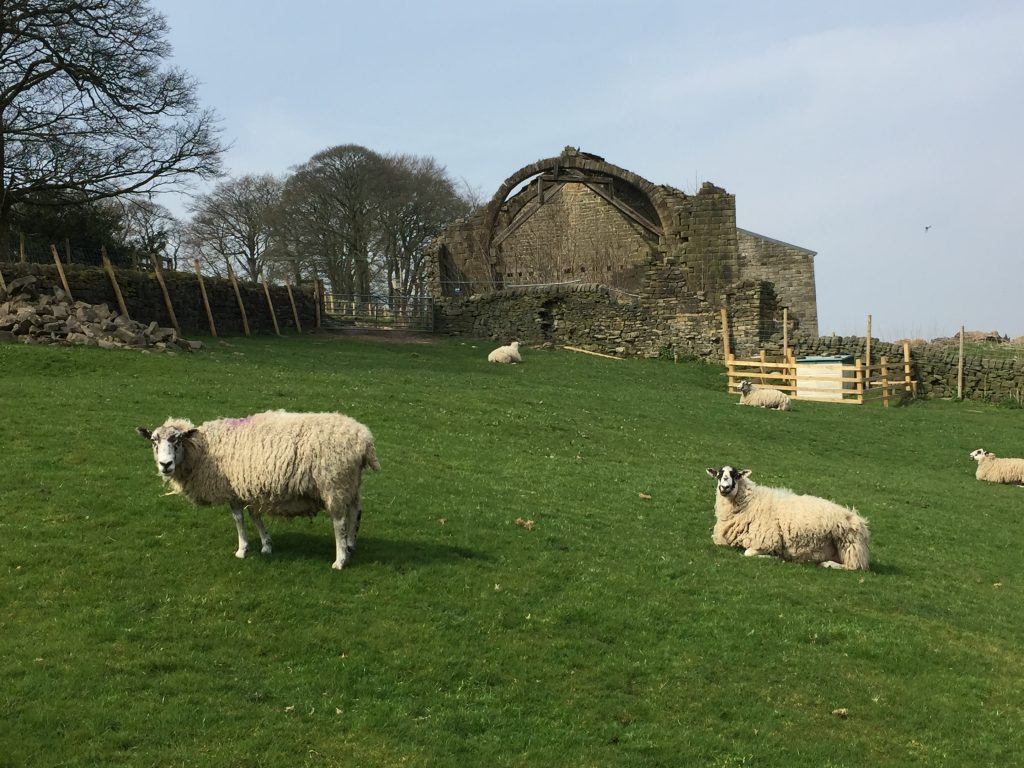
I could see a massive rounded arch atop a derelict barn at the top of the hill and, with my love of all things ruined, I increased my pace. Though the barn was surrounded by a wire fence I could see the old fireplaces, reminding me of the barn in our field at Affetside where I grew up. Perhaps that’s why I have a ‘thing’ about old buildings.
This got me thinking of a very early memory I have of my dad and some other guy removing the roof from our ruined barn one very hot day and my dad getting terribly burned by the sun. They were taking the roof off so that it wouldn’t collapse on me when I played in there. It had a huge stone fireplace too – and a date stone of 1842 (?) . At Old Chamber there were huge rotted wooden sliding doors into another barn, this time a brick one, and from the sound of it there was possibly some lambing in progress. Across from the barn a dead baby lamb was lying on the grass. I passed a water trough covered in moss where the only colour was a couple of plant pots hanging on the side, bursting with colour.

Delightful. I saw several signs advertising Bed and Breakfast and a couple were sitting in the garden drinking an afternoon glass of wine overlooking what must be one of the best views in the valley. Old Chamber is on a level with Heptonstall, which you can see across the Calder Valley. I must find out more about this settlement – and how it got its name. I came to ‘The Lodge’ and as I was taking a photo of the date stone above the porch, 1642, a man approached me from the next cottage where he’d been sitting on a bench. “If yer think that’s impressive, wait til I show you t’ door.” And he came around the pulled the door to. “But that’s not old,” I said, gazing at what looked to me a new very solid looking carved door. “Cost three thousand pounds did that door,’” he said. “It’s brand new.” “They wanted to put new winders int’ back, an awl, but they weren’t allowed t’put 9 glasses in. ‘T council towd ‘en they couldn’t. ‘ad t’ be 4 an’ 4.” I did wonder how they’d got planning permission to renovate ‘the lodge’ with the new stones.

I continued on my way, taking ‘New Road’ according to my map. This proved to be a cart track, with the cobbles mostly worn away and it was slippery with loose stones but I took my time.

I was shown the way by two butterflies who kept fluttering in front of me and landing on dandelions. The previous night I’d attended a Camera club online lecture about Macrophotography by Tony North. His close ups of insects were amazing and he described how he would get down on his stomach so as not to frighten the butterflies. So I gave it a go!

When I came to the mast of the TV transmitter I realized that I was now directly opposite my apartment. For a few weeks I’d been wondering if there was access to the top of the hill directly in front of my living room window and now here I was – without trying! I followed the steep road down and suddenly found myself at Weasel Hall where, in December 2017 I’d gone to explore since one of my ancestors had lived there: http://blog.hmcreativelady.com/?s=weasel
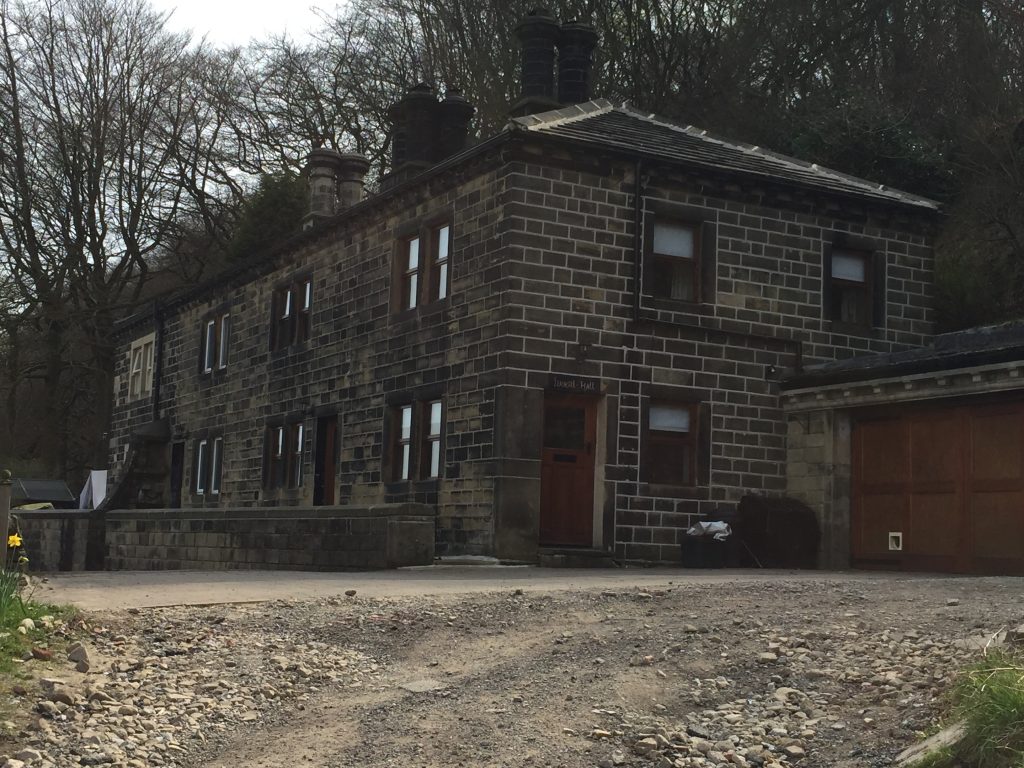
I reached the canal, crossed the river by a rarely used bridge and found myself an Easter bonnet. What do you think?
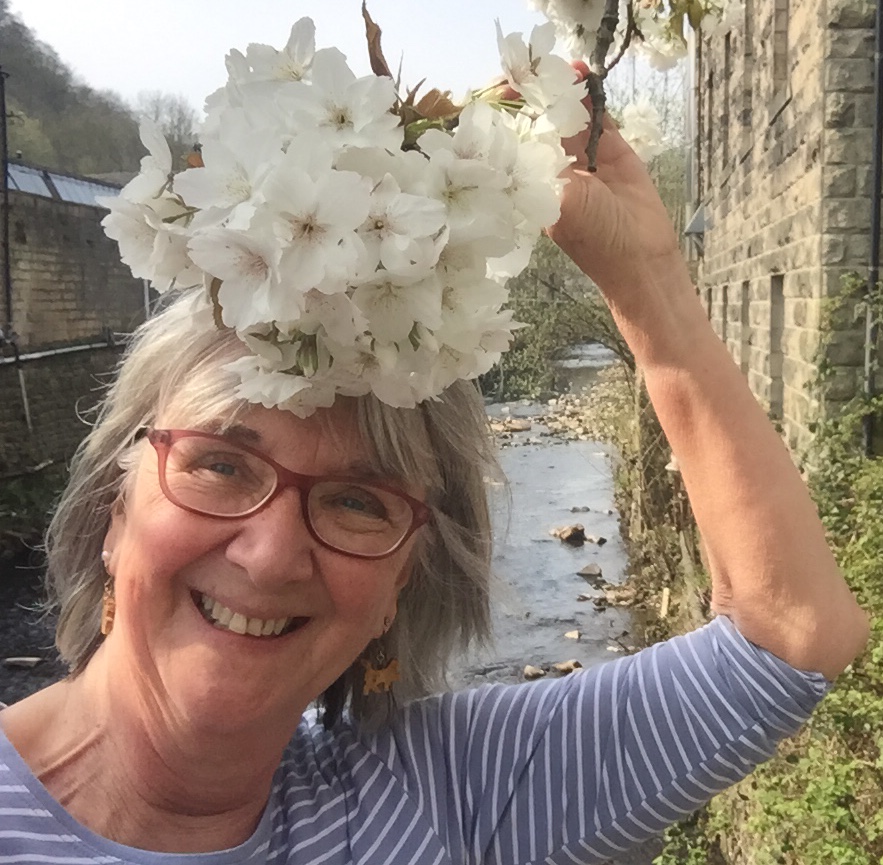
HAPPY EASTER

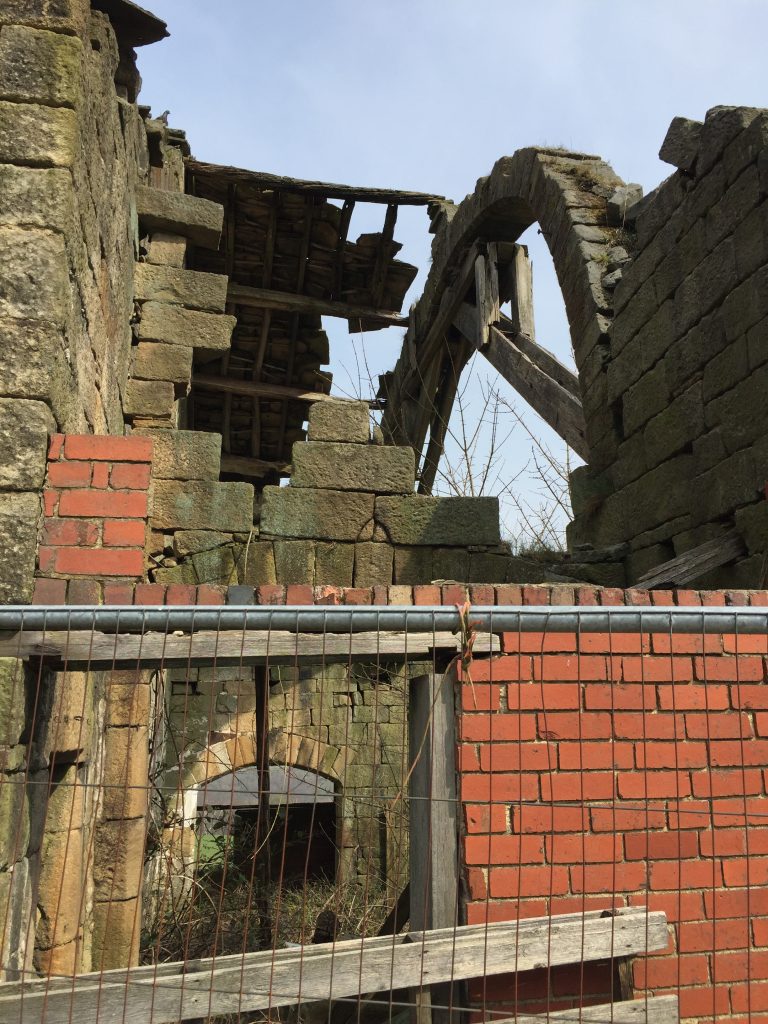

Leave a Reply